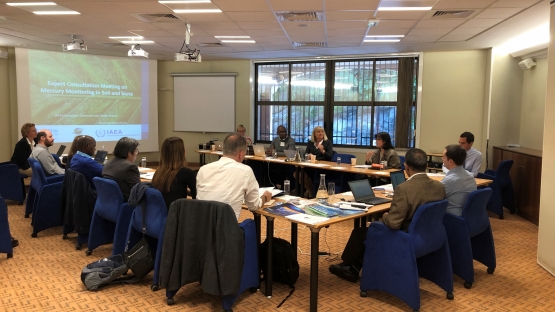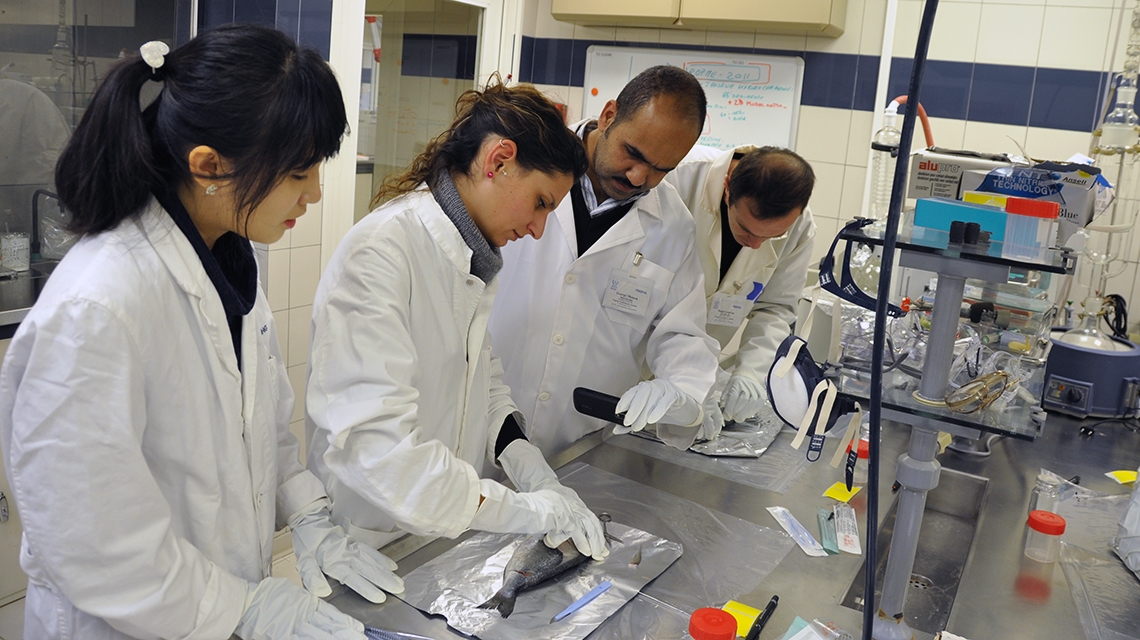Given its devastating health effects as a potent neurotoxin, mercury is one of the top ten chemicals of public concern, according to the World Health Organisation (WHO). The IAEA Environment Laboratories, together with UN Environment, hosted experts from around the world last month to discuss how best Member States can tackle monitoring of this global pollutant. This meeting took place in the context of a GEF-funded project to support a Global Monitoring Plan of Mercury for the landmark Minamata Convention on Mercury, adopted in 2013 by 128 countries.
Following the convention’s Conference of Parties (COP) in 2018, biota (such as plants, fish, seabirds and shellfish) and soil were proposed to be reviewed as additional matrices of interest for mercury monitoring. With global seafood consumption nearly doubling in the past three decades and over 1 billion people around the globe relying predominantly on seafood sources for their protein intake, monitoring of mercury ocean concentrations is critical.
The meeting brought together a variety of stakeholders on mercury monitoring - scientists, the Minamata Convention Secretariat, UN Environment and representatives from Parties to the Convention - to discuss the merits in adding biota and soil to the matrices to be monitored within the Minamata Convention implementation. Currently only atmospheric and human bio-monitoring are being conducted.
As the only marine laboratory in the UN system, the IAEA Environment Laboratories have been at the forefront of providing fit-for-purpose analytical methods for monitoring of mercury and methyl mercury in marine samples, such as fish or shellfish, marine sediments and seawater. At the meeting, Ms. Emiliya Vasileva, research scientist at the IAEA Environment Laboratories, shared the Laboratories’ expertise on mercury and methyl mercury methods development, supporting improvement of worldwide performance of monitoring laboratories and the availability of reliable and comparable analytical data for global mercury monitoring.
“The new avenue to become a partner with UN Environment in the implementation of the Minamata convention is exciting, and we are looking forward to receive a clear mandate from the signatories during the next COP in November. Together, we can assist our Member States with much needed mercury monitoring to promote seafood safety and the health of the most vulnerable members of society,” said Sylvia Sander, Section Head of the Marine Environment Studies Laboratory, one of the three Monaco-based laboratories that comprise the IAEA Environment Laboratories, the fourth being the Terrestrial Environment Laboratory in Seibersdorf, Austria.
The IAEA Environment Laboratories have long worked with Member States on the development of criteria for generating high-quality data and improvement of mercury monitoring in the ocean as well as on studies related with the transfer of this toxic pollutant up the food chain. This includes the distribution of recommended analytical procedures for the determination of mercury and mercury species, production of matrix certified reference materials, organisation of global inter-laboratory comparisons and training of laboratory practitioners dealing with mercury monitoring. IAEA Certified Reference Materials are valuable tools for the validation of analytical methods and for the establishment of traceability of measurement results used for mercury monitoring to the units from the internationally accepted system of reference, SI.
The expert meeting follows on longstanding cooperation between IAEA and UN Environment, who first started working together in 1973 when they jointly organised one global interlaboratory comparison on mercury itself, as well as other trace metals. Another hallmark collaboration includes the annual training course at the IAEA Environment Laboratories, part of the Mediterranean Action Plan (MED POL), UN Environment’s programme on pollution in the Mediterranean. There too mercury is among the pollutants for which the IAEA trains scientists from Mediterranean countries on sampling and analytical methods in biota such as fish or mussels and marine sediment.
Together, we can assist our Member States with much needed mercury monitoring to promote seafood safety and the health of the most vulnerable members of society





